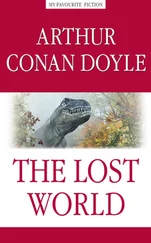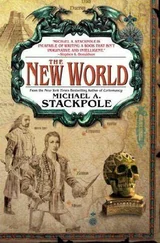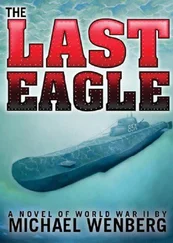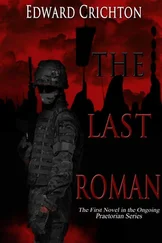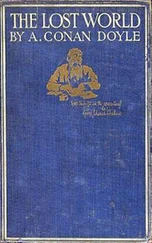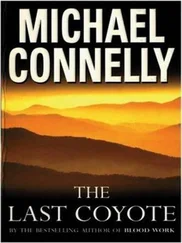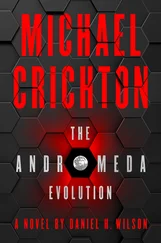Michael Crichton - The Lost World
Здесь есть возможность читать онлайн «Michael Crichton - The Lost World» весь текст электронной книги совершенно бесплатно (целиком полную версию без сокращений). В некоторых случаях можно слушать аудио, скачать через торрент в формате fb2 и присутствует краткое содержание. Жанр: Детская проза, на английском языке. Описание произведения, (предисловие) а так же отзывы посетителей доступны на портале библиотеки ЛибКат.
- Название:The Lost World
- Автор:
- Жанр:
- Год:неизвестен
- ISBN:нет данных
- Рейтинг книги:5 / 5. Голосов: 1
-
Избранное:Добавить в избранное
- Отзывы:
-
Ваша оценка:
- 100
- 1
- 2
- 3
- 4
- 5
The Lost World: краткое содержание, описание и аннотация
Предлагаем к чтению аннотацию, описание, краткое содержание или предисловие (зависит от того, что написал сам автор книги «The Lost World»). Если вы не нашли необходимую информацию о книге — напишите в комментариях, мы постараемся отыскать её.
The Lost World — читать онлайн бесплатно полную книгу (весь текст) целиком
Ниже представлен текст книги, разбитый по страницам. Система сохранения места последней прочитанной страницы, позволяет с удобством читать онлайн бесплатно книгу «The Lost World», без необходимости каждый раз заново искать на чём Вы остановились. Поставьте закладку, и сможете в любой момент перейти на страницу, на которой закончили чтение.
Интервал:
Закладка:
"Because there's a lot of interest in the material you gave us, Ian. A lot." She dried his hand with a towel, inspected it again. "I think you'll survive."
"What have you found?" Malcolm said to her.
"You have to admit, it is very provocative. By the way, is it from Costa Rica?"
Keeping his voice neutral, Malcolm said, "Why do you say that?"
"Because there are all these rumors about unknown animals showing up in Costa Rica. And this is definitely an unknown animal, Ian."
She led him out of the nursery, and into a small conference room He dropped into a chair, resting his cane on the table. She lowered the lights, and clicked on a slide protector. "Okay. Here's a close-up of your original material, before we be an our examination. As you see, it consists of a fragment of animal tissue in a state of very advanced necrosis. The tissue measures four centimeters by six centimeters. Attached to it is a green plastic tag, measuring two centimeters square. Tissue cut by a knife, but not a very sharp one."
Malcolm nodded.
"What'd you use, Ian, your pocketknife?" "Something like that."
"All right. Let's deal with the tissue sample first." The slide changed; Malcolm saw a microscopic view. "This is a gross histologic section through the superficial epidermis. Those patchy, ragged gaps are where the postmortem necrotic change has eroded the skin surface. But what is interesting is the arrangement of epidermal cells. You'll notice the density of chromatophores, or pigment-bearing cells. In the cut section you see the difference between melanophores here, and allophores, here. The overall pattern is suggestive of a lacerta or amblythynchtis."
"You mean a lizard?" Malcolm said.
"Yes," she said. "It looks like a lizard-though the Picture is not entirely consistent." She tapped the left side of the screen. "You see this one cell here, which has this slight rim, in section? We believe that's muscle. The chromatophore could open and close. Meaning that this animal could change color, like a chameleon. And over here you see this large oval shape, with a pale center? That's the pore of a femoral scent gland. There is a waxy substance in the center which we are still analyzing. But our presumption is that this animal was male, since only male lizards have femoral glands."
"I see," Malcolm said.
She changed the slide, Malcolm saw what looked like a close-up of a sponge. "Going deeper. Here we see the Structure of the subcutaneous layers. Highly distorted, because of gas bubbles from the clostridia infection that bloated the animal. But you can get a sense of the vessels - see one here - and another here - which are surrounded by smooth muscle fibers. This is not characteristic of lizards, In fact, the whole appearance of this slide is wrong for lizards, or reptiles of any sort."
"You mean it looks warm-blooded."
"Right," Gelman said. "Not really mammalian, but perhaps avian. This could be, oh, I don't know, a dead pelican. Something like that."
"Uh-huh."
"Except no pelican has a skin like that."
"I see," Malcolm said.
"And there s no feathers."
"Uh-huh."
"Now," Gelman said, "we were able to extract a minute quantity of blood from the intra-arterial spaces. Not much, but enough to conduct a microscopic examination. Here it is."
The slide changed again. He saw a jumble of cells, mostly red cells, and an occasional misshapen white cell. It was confusing to look at.
"This isn't my area, Elizabeth," he said.
"Well, I'll just give you the highlights," she said. "First of all, nucleated red cells. That's characteristic of birds, not mammals. Second, rather atypical hemoglobin, differing in several base pairs from other lizards. Third, aberrant white-cell structure. We don't have enough material to make a determination, but we suspect this animal has a highly unusual immune system.
"Whatever that means," Malcolm said, with a shrug.
"We don't know, and the sample doesn't give us enough to find out. By the way, can you get more?"
"I might be able to," he said.
"Where, from Site B?"
Malcolm looked puzzled. "Site B?"
"Well, that's what's embossed on the tag." She changed the slide. "I must say, Ian, this tag is very interesting. Here at the zoo, we tag animals all the time, and we're familiar with all the ordinary commercial brands sold around the world. Nobody's seen this tag before. Here it is, magnified ten times. The actual object is roughly the size of your thumbnail. Uniform plastic outer surface, attaches to the animal by a Teflon coated, stainless-steel clip on the other side. It's a rather small clip, of the kind used to tag infants. The animal you saw was adult?"
"Presumably."
"So the tag was probably in place for a while, ever since the animal was young," Gelman said. "Which makes sense, considering the degree of weathering. You'll notice the pitting on the surface. That's very Unusual. This plastic is Duralon, the stuff they use to make football helmets. It's extremely tough, and this pitting can't have occurred through simple wear."
"Then what?"
"It's almost certainly a chemical reaction, such as exposure to acid, perhaps in aerosol form."
"Like volcanic fumes?" Malcolm said.
"That could do it, particularly in view of what else we've learned. You'll notice that the tag is rather thick - actually, it's nine millimeters across. And it's hollow."
"Hollow?" Malcolm said, frowning.
"Yes. It contains an inner cavity. We didn't want to open it, so we X- rayed it. Here." The slide changed. Malcolm saw a jumble of white lines and boxes, inside the tag.
"There appears to be substantial corrosion, again perhaps from acid fumes. But there's no question what this once was. It's a radio tag, Ian. Which means that this unusual animal, this warm-blooded lizard or whatever it was, was tagged and raised by somebody from birth. And that's the part that's got people around here upset. Somebody's raising these things. Do you know how that happened?"
"I haven't the faintest idea," Malcolm said.
Elizabeth Gelman sighed. "You're a lying son of a bitch."
He held out his hand. "May I have my sample back?"
She said, "Ian. After all I've done for you."
"The sample?"
"I think you owe me an explanation."
"And I promise, you'll have one. In about two weeks. I'll buy dinner."
She tossed a silver-foil package on the table. He picked it up, and slipped it in his pocket. "Thanks, Liz." He got up to go, "I hate to run, but I've got to make a call right away."
He started for the door, and she said, "By the way, how did it die, Ian? This animal."
He paused. "Why do you ask?"
"Because, when we teased up the skin cells, we found a few foreign cells under the outer epidermal layer. Cells belonging to another animal."
"Meaning what?"
"Well, it's the typical picture you see when two lizards fight. They rub against each other. Cells get pushed under the superficial layer."
"Yes," he said. "There were signs of a fight on the carcass. The annimal had been wounded."
"And you should also know there were signs of chronic vasoconstriction in the arterial vessels. This animal was under stress, Ian. And not just from the fight that wounded it. That would have disappeared in early postmortem changes. I'm talking about chronic, continuous stress. Wherever this creature lived, its environment was extremely stressful and dangerous."
"I see."
"So. How come a tagged animal has such a stressful life?"
At the entrance to the zoo, he looked around to see if he was being followed, then stopped at a pay phone and dialed Levine. The machine picked up; Levine wasn't there. Typical, Malcolm thought. Whenever you needed him he wasn't there. Probably off trying to get his Ferrari out of impound again.
Malcolm hung up, and headed toward his car.
Читать дальшеИнтервал:
Закладка:
Похожие книги на «The Lost World»
Представляем Вашему вниманию похожие книги на «The Lost World» списком для выбора. Мы отобрали схожую по названию и смыслу литературу в надежде предоставить читателям больше вариантов отыскать новые, интересные, ещё непрочитанные произведения.
Обсуждение, отзывы о книге «The Lost World» и просто собственные мнения читателей. Оставьте ваши комментарии, напишите, что Вы думаете о произведении, его смысле или главных героях. Укажите что конкретно понравилось, а что нет, и почему Вы так считаете.

